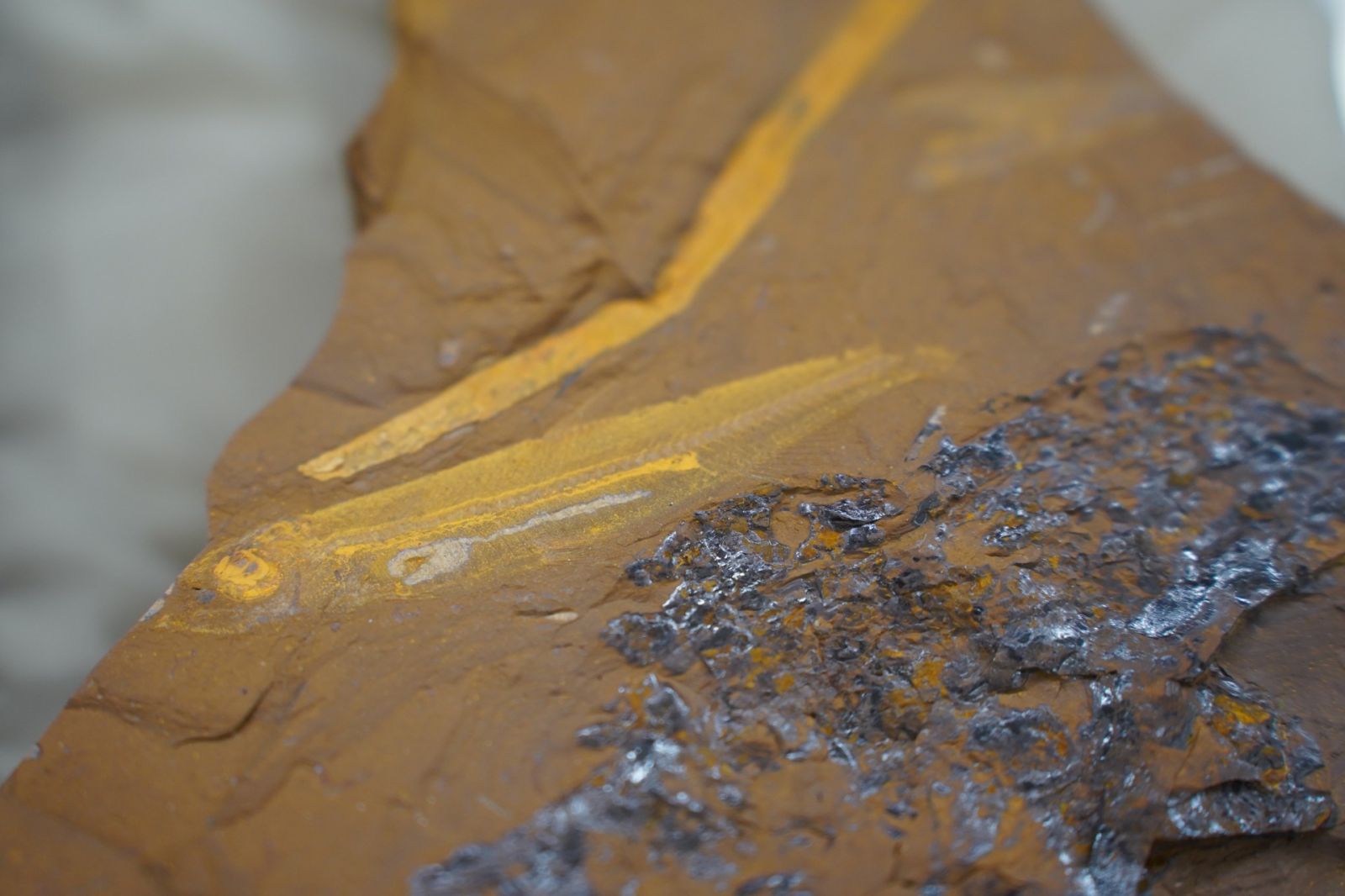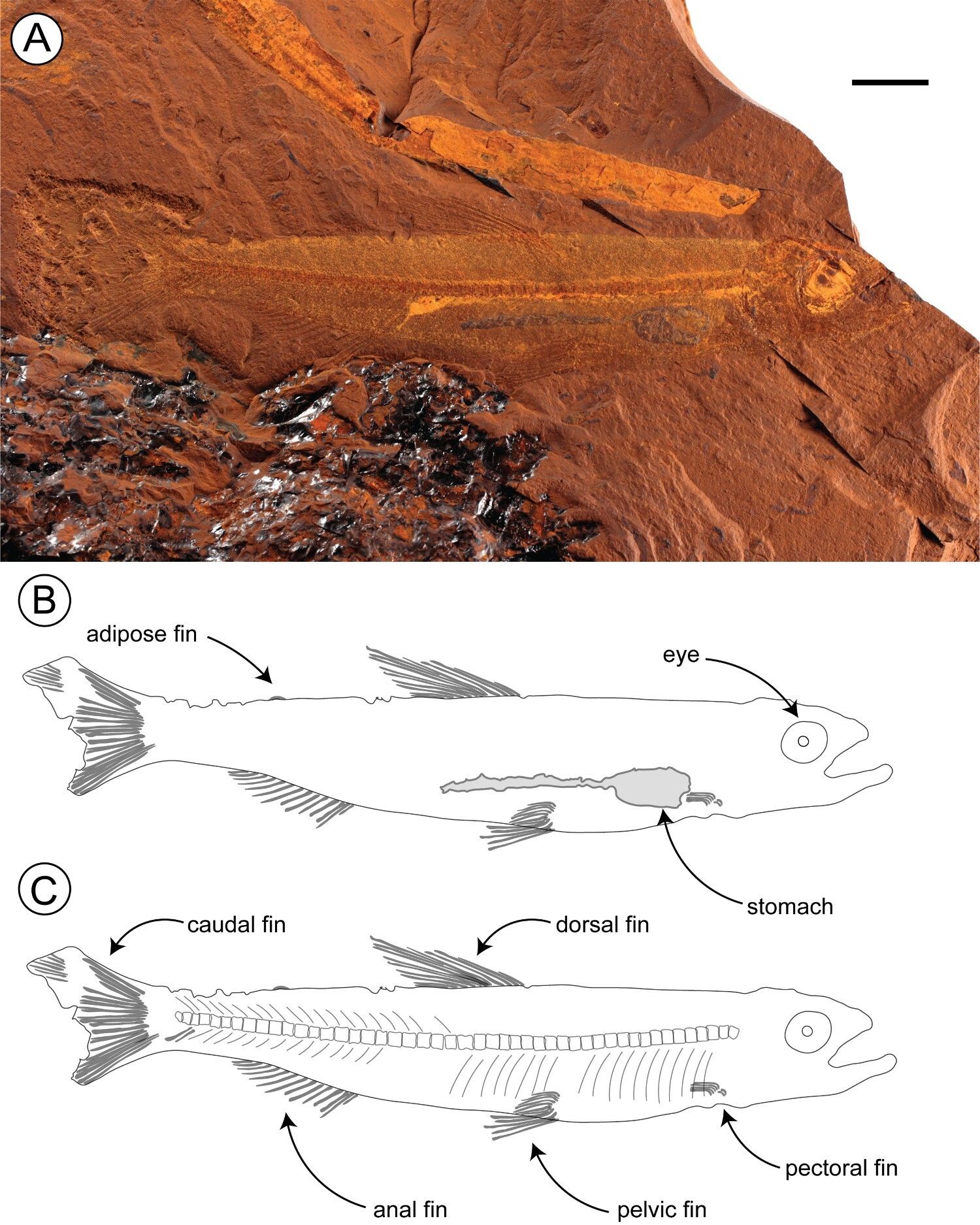A 15-million-year-old fish remarkably preserved 🐟
Published by Cédric,
Article author: Cédric DEPOND
Source: Journal of Vertebrate Paleontology
Other Languages: FR, DE, ES, PT
Article author: Cédric DEPOND
Source: Journal of Vertebrate Paleontology
Other Languages: FR, DE, ES, PT
Follow us on Google News (click on ☆)

In the iron-rich rocks of McGraths Flat, New South Wales, researchers have uncovered a 15-million-year-old freshwater fish fossil. Named Ferruaspis brocksi, this specimen belongs to a group of fish still found in Australia today. Its exceptional preservation allows scientists to study not only its anatomy but also its behavior and environment.
A fossil with multiple revelations
This fish, the first freshwater smelt fossil discovered in Australia, sheds light on the evolution of aquatic ecosystems during the Miocene. Researchers identified its diet through the remains of invertebrates found in its stomach, primarily ghost midge larvae. These details provide a rare insight into species interactions in this prehistoric environment, revealing a rich and interconnected ecosystem.
An intriguing detail was also observed: a parasite, a young freshwater mollusk, was attached to its tail. These mollusks, called glochidia, use fish as a means of transport to disperse through waterways. This discovery shows that Ferruaspis brocksi played a key role in its ecosystem, both as a predator and a host, illustrating symbiotic relationships that existed 15 million years ago.

A - Photograph.
B and C - Line drawings showing the position of different fins, the eye, and the stomach. Scale is 8 mm.
The study of melanosomes, microscopic structures responsible for pigmentation, allowed researchers to reconstruct the fish's colors. Its back was dark, its belly light, and two lateral stripes adorned its sides. These color patterns, likely used for camouflage or communication, provide clues about the behavior of this extinct species.
These multiple revelations make Ferruaspis brocksi a major discovery, offering a detailed view of aquatic life during the Miocene and highlighting the importance of exceptionally preserved fossils for understanding ancient ecosystems.
McGraths Flat: an exceptional site
The McGraths Flat site is classified as a "Lagerstätte," meaning a fossil deposit known for its exceptional preservation quality. The iron-rich rocks have preserved minute details, providing a precise snapshot of life 11 to 16 million years ago.
At that time, the region was a temperate rainforest, home to rich biodiversity. Fossils of plants, insects, and vertebrates found at the site testify to a dynamic ecosystem.
This discovery underscores the importance of McGraths Flat for understanding Australia's natural history. Each fossil is a piece of the puzzle, gradually revealing this distant past.
Going further: What are melanosomes?
Melanosomes are cellular organelles found in animal tissues, responsible for producing and storing pigments called melanins. These pigments give color to skin, hair, feathers, and even eyes.
In fossils, melanosomes can sometimes be well-preserved, particularly under specific conditions like those at McGraths Flat. Their study allows scientists to determine the colors of extinct organisms, a major breakthrough in paleontology.
Until recently, this technique was mainly used to reconstruct the colors of dinosaur feathers. The discovery of melanosomes in Ferruaspis brocksi marks the first application of this method to a fossil fish, opening new perspectives for studying ancient aquatic animals.
By analyzing the shape and density of melanosomes, researchers can deduce not only colors but also patterns and visual adaptations of extinct species, offering unprecedented insights into their appearance and behavior.